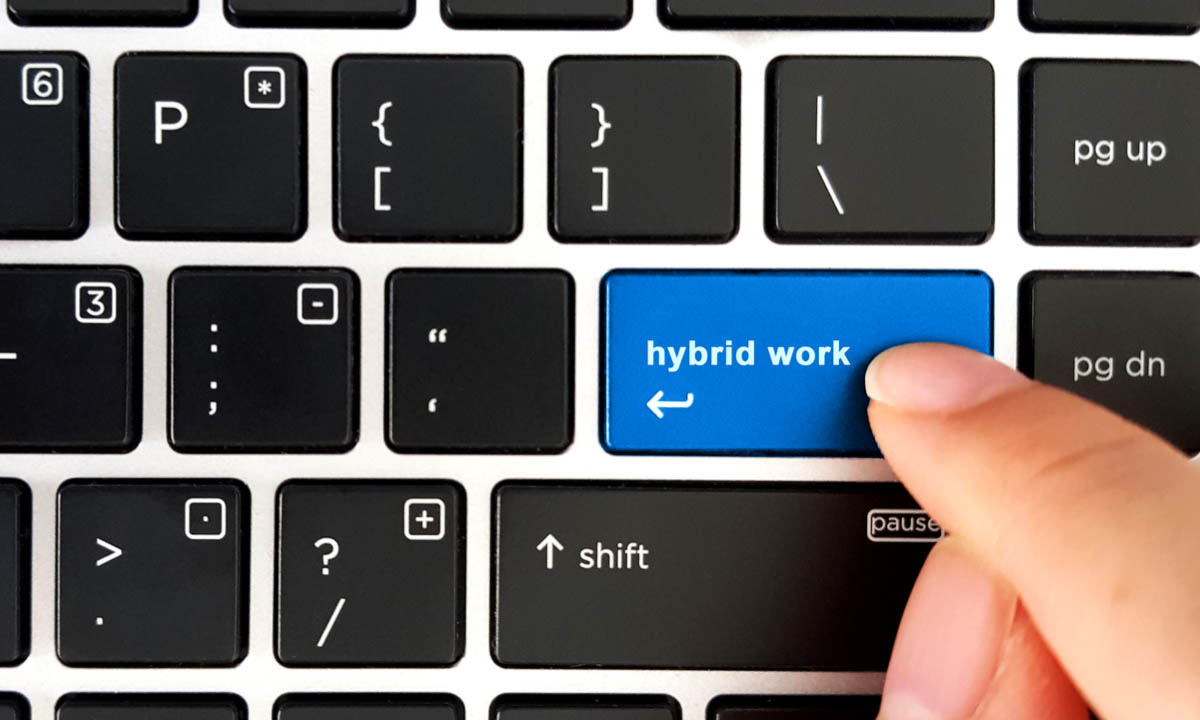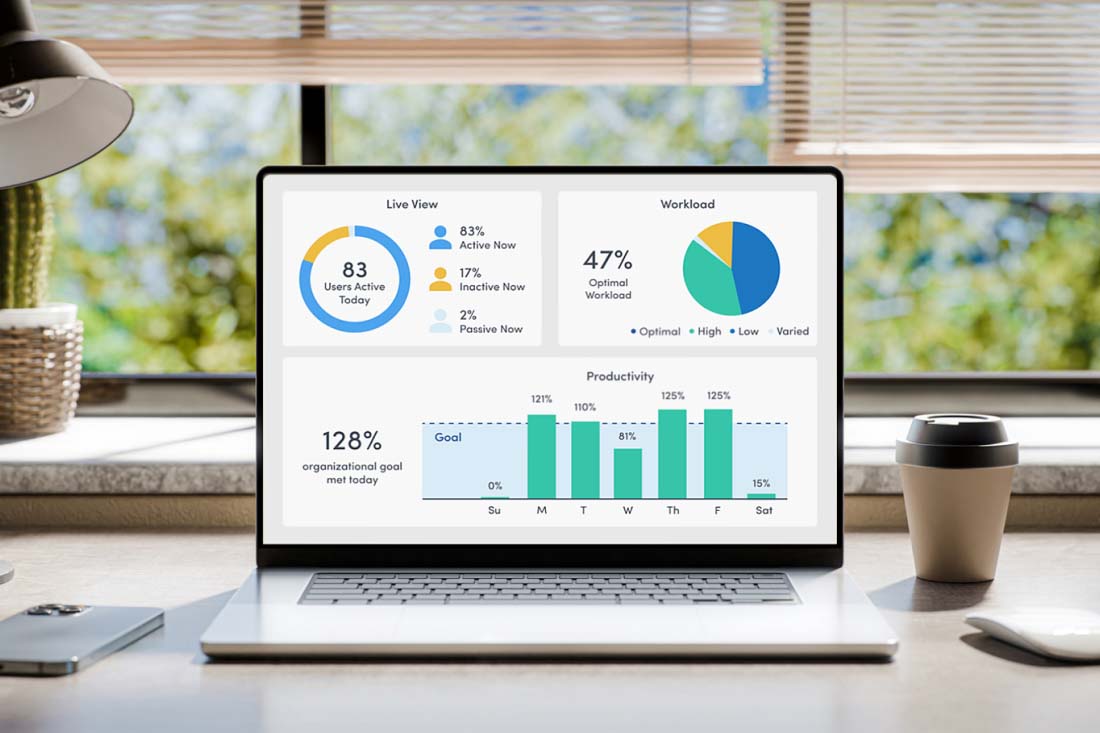As the workplace continues to evolve, many companies are faced with a critical decision. Should you require people to report to the office, or let them work from home?
For many, the answer lies somewhere between.
While media headlines have long made it seem like you have to choose one or the other — “Amazon will now fire employees who don’t come into the office” vs “HubSpot says remote employees are more engaged” — many companies are in fact exploring happy mediums.
When Amazon’s return-to-office mandate went into effect, it required employees to report just three days per week. At Zoom, it’s two days. And at Salesforce, each team decides how often they’ll collaborate in person.
By offering a combination of remote and in-office work arrangements, these employers are embracing hybrid work policies. While the setup may vary, the goal is the same — to create a more productive, engaged workforce.
Wondering which type of hybrid work schedule will work best for your workforce? Let’s examine some of the most common types of hybrid work models in use today, along with the leading companies using them.
Examples of brands with a primarily in-office hybrid work model
In the in-office hybrid work arrangement, companies encourage employees to come into the office most days while offering the flexibility to work from home one or two days a week.
1. Amazon
At Amazon, employees are now required to be in office at least three days a week. In a company blog post addressing staff, CEO Andy Jassy says the decision to transition to a predominantly in-person hybrid work model was made to help strengthen company culture:
“It’s easier to learn, model, practice and strengthen our culture when we’re in the office together most of the time and surrounded by our colleagues… When you’re in-person, people tend to be more engaged, observant, and attuned to what’s happening in the meetings and the cultural clues being communicated.”
Amazon adopted the company-wide policy after observing various models across the company, ranging from full-time remote workers to fully in-person teams. The goal? To achieve an employee experience that ultimately benefits the customer through continuous, collaborative innovation.
2. Zoom
Like Amazon, Zoom executives made a decision to have its remote employees return to the office in 2023. While the company’s structured hybrid policy is focused on bringing people back into the office, it still offers plenty of flexibility. Team members who live within 50 miles of an office — about 35% of employees — are required to be on site two days a week. They can discuss issues with managers on a case-by-case basis, and are encouraged first and foremost to help promote collaboration and a sense of culture.
Zoom’s decision is less about the benefits of hybrid work, although there are many, and more about experiencing customers’ hybrid work pain firsthand. So far, the approach appears to be working. On the first day product engineering employees were back at the office, for example, they identified enhancements to Zoom’s in-office products that would’ve otherwise gone unnoticed.
3. Ford Foundation
The Ford Foundation is another example of an innovative company taking a structured approach to hybrid work, with flexibility sprinkled in. The nonprofit describes its hybrid work model as one designed to balance health, safety and employee wellbeing while also optimizing team collaboration and a sense of community.
Here’s how it works:
Tuesdays and Wednesdays are designated as onsite days for all staff, and employees can choose their third onsite days. But the policies don’t end there — there are also designated work hours for uninterrupted focus time. Fridays are “light meeting” days, regardless of where people are working. And three times a year, the Ford Foundation has what it calls “remote quiet weeks” when everyone works from home and non-critical meetings are suspended.
Examples of brands with a primarily remote hybrid work model
In a remote-first company culture, employees work from home or other remote locations most of the time. However, the business might opt to make office space available so teams can meet in-person as needed.
1. Atlassian
Atlassian has long been defined by its remote work policies, which the company lovingly refers to as its Team Anywhere. Based in Australia, the enterprise brand has embraced distributed work ever since the first U.S. branch opened in 2005.
Atlassians can live in any of the 13 countries where the company has legal entities, which means more than 40% of employees live two hours or more from an office. Rather than requiring people to move closer, the business lets each employee decide what works best for them — whether that means coming to an office, working from home or a combination of the two. Workers are even allowed to work outside their designated “home base” for short periods of time each year if that’s what they need to do to stay “energized and balanced.”
2. LinkedIn
In a 2021 blog post — one the company still links to on its careers page — LinkedIn describes how and why executives embraced an employee-led, remote-first hybrid work policy. The business chose to remove all in-office expectations, allowing the majority of its workforce to work remotely full-time.
At the same time, the company responded to the 87% of team members who said they like to be in the office sometimes. Rather than eliminating offices altogether, LinkedIn maintains “amazing workplaces” for those times when teams choose to come together.
3. Formstack
Although it has a relatively small workforce, Formstack is a notable example as an early pioneer of the remote-first hybrid work trend. Since the early 2000s, Formstack employees have been allowed full flexibility to work from home or co-working spaces. The business says its goal is to give people “true workplace flexibility that honors what you need, when you need it.”
While team members have the option to come into the office at any time, they’re also encouraged to work from wherever they’re most productive, based on the schedule that makes sense for each person. Team members also receive monthly home office allowances, as well as wellness allowances to help support work-life balance.
Examples of brands with a primarily flexible hybrid work model
In a flexible hybrid work model, it’s up to team members and their managers to decide when, where and how people work best. This is the culture we’ve adopted here at ActivTrak — while physical workspaces are available for those who need or prefer it, there’s no mandate to report to the office.
1. HubSpot
At HubSpot, employees choose from three flexible work options. They can work from home, report to the office or opt for a mix of both. Those decisions can be changed once a year, and the company provides support based on each employee’s preferred work style. Remote employees receive assistance for home office setups, in-office staff get dedicated desks and flex team members have a mix of “hotel desks” and home office help.
The company says its decision to embrace an employee-led hybrid work model was guided by a desire to empower people to do their best work. For some, that means working alongside others at headquarters. For others, it requires the convenience or quiet of a home office. And for many, the mix of both worlds is ideal.
2. Salesforce
Salesforce leaves it up to each manager to decide which hybrid work model works best for their team, while providing some general guidelines to follow. The result is a “Return & Remote” approach that empowers leaders to make decisions based on the nature of each job and the individualism of each employee.
Office-flexible teams are assigned specific office locations three days a week, while customer-facing employees report four days. For tech teams like product and engineering, that number is just 10 days a quarter. Remote employees aren’t assigned to an office, and work with their managers to determine where and when they’ll work. What really makes Salesforce’s hybrid work model unique is the company’s definition of “in-person.” While that might involve reporting to an office, it also encompasses a variety of in-person activities such as meeting with customers, attending events and collaborating with partners.
3. Zapier
Zapier’s work arrangements are best described by the headline at the top of the company’s careers page: “Join us. From anywhere.” With employees spread across 17 time zones in dozens of countries, the company lets each person decide for themselves how, when and where they want to work. Teams “communicate asynchronously” and “work autonomously” while taking ownership of their day-to-day responsibilities.
While the business does bring people together at in-person events and company retreats, Zapier doesn’t have any offices. Instead, executives pour resources into benefits designed to support flexible work. Employees receive stipends for job-related expenses such as software and home office setups, as well as lifestyle spending accounts to support wellness and personal life expenses.
Adopt a hybrid work model with ActivTrak
As these examples show, there’s no one right way to approach hybrid work. For some industries and departments, requiring employees to report to the office several days a week works best. For others, a primarily remote work model is even better. And in many instances, innovation happens when managers and team members decide together which option they need to be successful.
The key is to understand what works best for your unique workforce. And ActivTrak can help.
Thousands of companies use our workforce analytics software to make data-driven decisions about hybrid work policies and harness the power of hybrid work technology. Whether you want to better support people who work from home or need to decide how often they should report to an office, ActivTrak gives you complete visibility into how people work — and how they work best.





